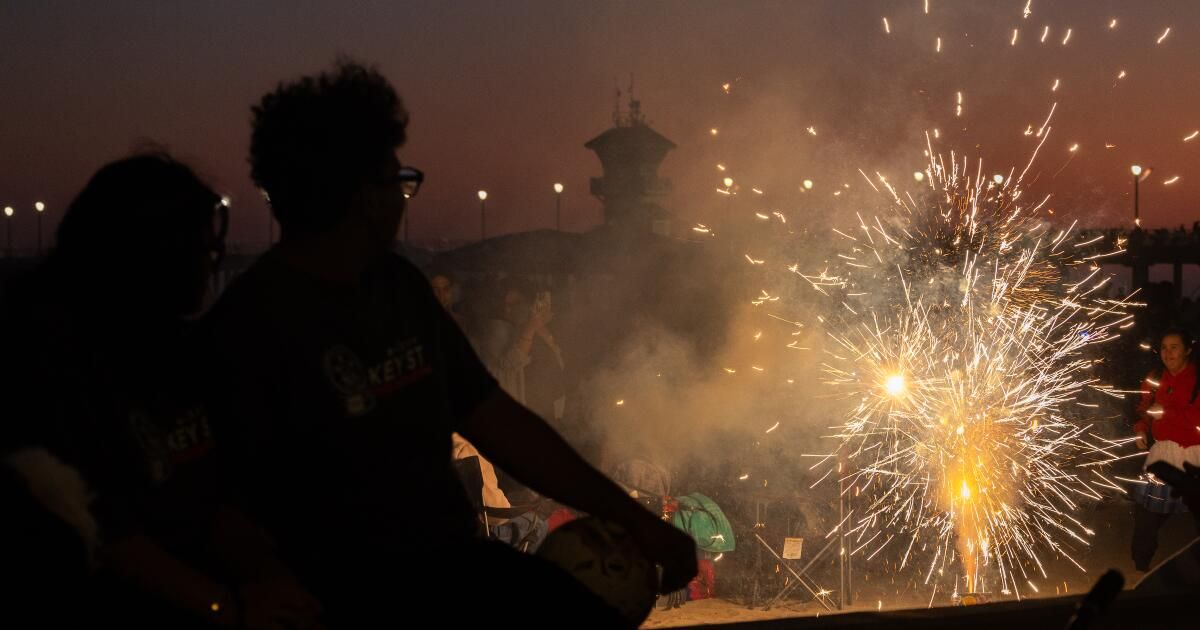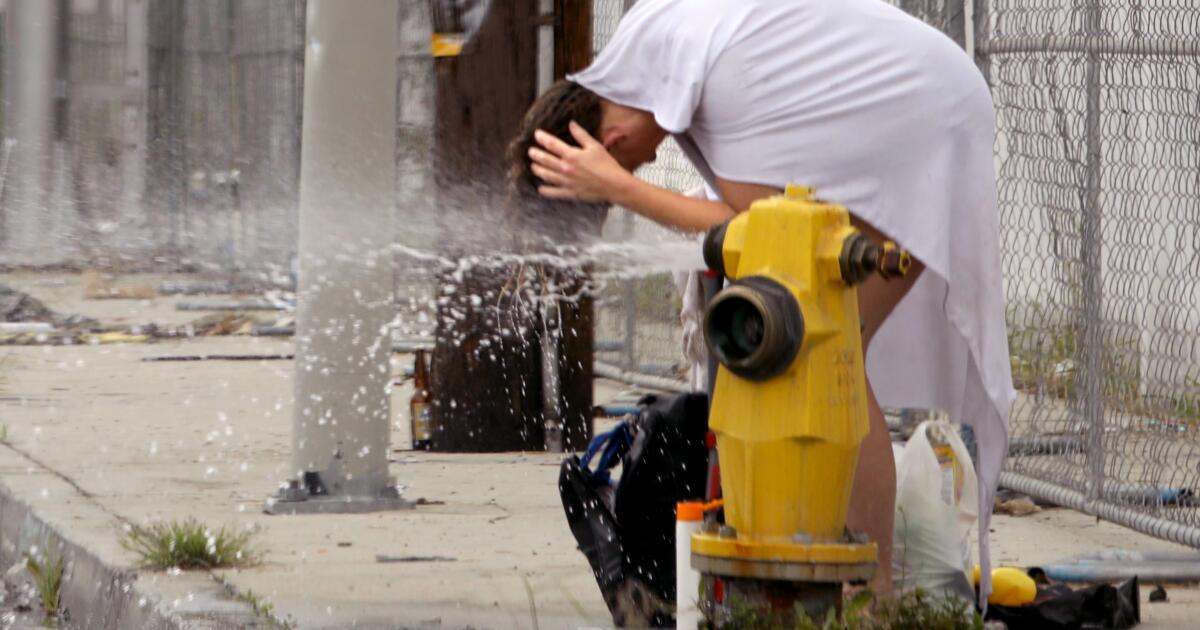Those bursts of light and percussive explosions from Fourth of July celebrations large and small left behind enough pollution to make the air unhealthy in parts of Los Angeles and Orange counties, as well as the Inland Empire.
According to the South Coast Air Quality Management District, fireworks emit high levels of particulate pollution and metallic air pollutants. These pollutants can contribute to negative health effects, especially in vulnerable populations.
A person watches fireworks under the pier before the official fireworks show in Huntington Beach on Thursday.
(Allen J. Schaben / Los Angeles Times)
District officials say fine particle pollution levels on July 4 and 5 are typically among the highest of the year. Studies last year found that locations closer to urban areas generally recorded higher concentrations of pollutants, while areas farther away recorded little or no pollution.
Smoke and combustion from fireworks aren't the only air pollutants, as residents of smoggy Southern California know well. Emissions from cars and refineries are already in circulation.
The South Coast AQMD on Thursday issued an advisory that will be in effect until midnight Friday, listing areas with unhealthy air quality.
According to the U.S. Air Quality Index, “very unhealthy” areas on Friday afternoon include Glendora, the San Gabriel Mountains, San Bernardino, Moreno Valley, Yucaipa, Redlands, Riverside and Loma Linda. The Air Quality Index also details the list of areas that have unhealthy air quality.
As of Friday afternoon, Los Angeles County communities with “unhealthy” air quality include:
- Santa Monica
- Beverly Hills
- Parts of Inglewood
- the Angels
- Glendale
- Pasadena
- Burbank
- West Covina
- Arcadia
- The mountain
- Pomona
In Orange County, Rancho Santa Margarita was one of the few communities with “unhealthy” air quality.
Inland Empire communities with “unhealthy” air quality include:
- Chino Hills
- Ontario
- Rancho Cucamonga
- Fountain
- Santa Ana Mountains
- Lake Elsinore
When the air is unhealthy, experts advise people with heart or lung disease, older adults, children and teens to reduce their risk of exposure by avoiding strenuous outdoor activities and limiting the time they spend outdoors.
If you plan to stay indoors, health experts suggest closing windows and doors and placing damp cloths at the bottom of both to keep outside air out.
Keep cool inside your closed home with fans or central air conditioning. If your HVAC system or window air conditioner has a fresh air option (i.e., it draws air from outside), turn it off and close the intake, or set the system to recirculate air.












